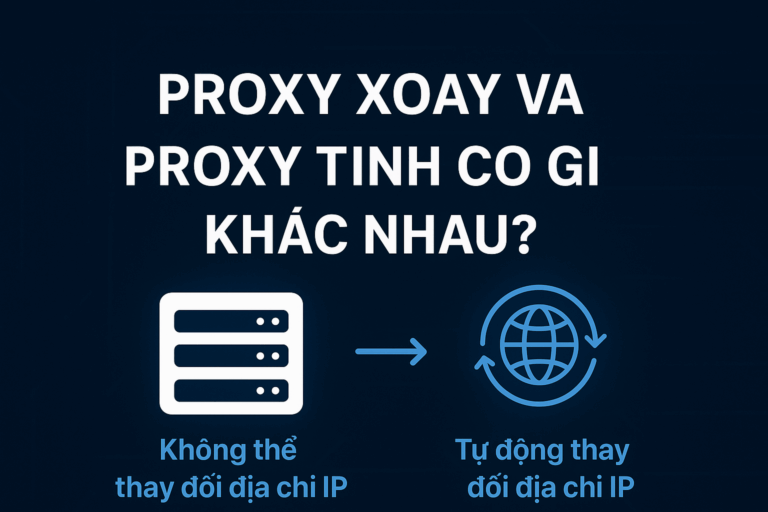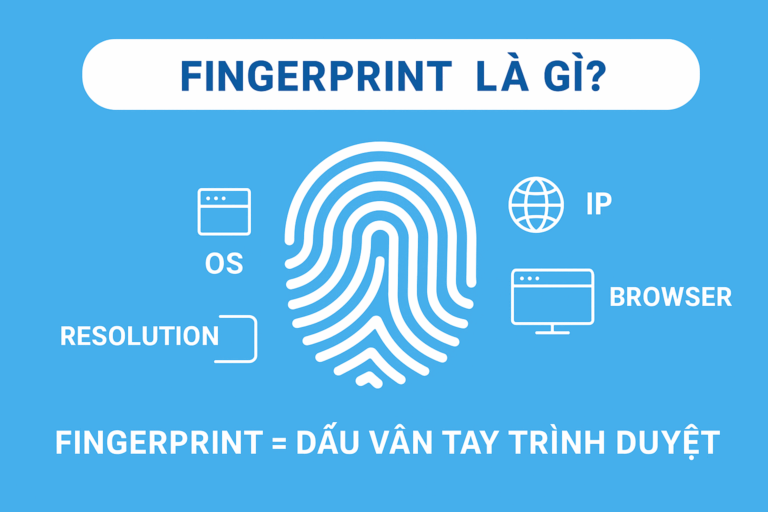Managing multiple accounts on social media platforms or advertising systems is no longer a strange thing, especially for businesses, multi-channel marketing teams or MMO teams. However, without a clear strategy, you can easily face risks such as checkpoints, mass account blocking, or being judged as spam.
One of the important factors that determine the security of the system is Fingerprint (browser fingerprint). This article will explain the concept, the reason for randomizing fingerprint, and guide the safety principles to help you manage multiple accounts effectively and legally.
1. What is Fingerprint? Why is it important when managing multiple accounts?
Fingerprint is a set of technical parameters that your browser or device sends to a server every time you visit a website. It is like a “digital fingerprint” that helps platforms identify who you are, what device you are using, and whether it is valid or not.

Common elements that make up a fingerprint include:
- User Agent: browser information, operating system.
- Timezone & Locale: time zone and area.
- Screen Resolution: screen resolution.
- Fonts & Plugins: fonts and utilities settings.
- Canvas & WebGL: device graphics configuration.
- Audio Fingerprint: audio data.
- Cookies & Local Storage: local storage information.
2. Why do you need to Randomize Fingerprint when raising multiple accounts?
Fingerprint randomization is the process of creating a different browser fingerprint for each account or group of accounts, helping platforms identify them as separate users, reducing checkpoint risks.

Key benefits:
a. Avoid checkpoints and mass lockdowns: When an account is checkpointed, if the fingerprints of other accounts are the same, the platform will block the entire account.
b. Data security and privacy: Ensure personal information and customer data are not leaked.
c. Manage multiple projects or brands: Businesses can operate multiple marketing teams at the same time without data conflicts.
d. Test and optimize advertising campaigns: Easily A/B test on multiple accounts, virtual devices without being flagged by the platform.
Important Note:
Randomizing fingerprints is not synonymous with circumvention or fraud. It is only safe and legal when serving legitimate purposes such as business management, system security, product testing.
3. Components that make up a Fingerprint
To effectively randomize fingerprinting, you need to understand the basic components that platforms typically track:
| Ingredient | Role |
|---|---|
| User Agent | Identify device type, browser, operating system |
| Timezone / Locale | Match the account's geographic location |
| Screen Resolution | Resolution suitable for each type of device |
| Canvas / WebGL | Graphics parameters, affecting display |
| Fonts / Plugins | Browser-specific fonts and extensions |
| Audio Fingerprint | Identify audio hardware |
| Cookies / Storage | Save login information, behavior |
4. Safety & Legality Principles of Fingerprint Randomization
When performing fingerprint randomization, you should follow these guidelines to ensure legality and safety:
a. Do not use for cheating: Avoid activities that violate the terms of service (ToS) such as spam, identity fraud, and illegal advertising.
b. Each account = a separate profile: Each account active on the browser has its own fingerprint, cookie, and proxy.
c. Reasonable and natural parameters: Random fingerprint must match account information (location, language, device type).
d. Use high quality proxies: Combine fingerprint with residential or mobile proxy to simulate real user.
e. Logging and data backup: Ensures recovery in the event of checkpoint failure or data loss.
5. How does Gemlogin help randomize fingerprints?
Independent cookie & storage management: Avoid cross-session fingerprint leakage — this is important to avoid creating similar “fingerprints” between multiple accounts.
Each profile = one fingerprint: Gemlogin stores profiles as separate browsers, so fingerprints (user agent set, window size, fonts, timezone…) are not shared between profiles.
Metadata change options: Through the interface, you can choose different user agents, adjust viewport, timezone and some other parameters to make the profile look “different” and more natural.
Attach 1:1 proxy: Combining private profile with private proxy helps fingerprint + IP address match logically (e.g. timezone and IP in same region), reducing the possibility of being detected.

CONCLUDE
Fingerprint randomization is not a way to cheat the platform, but a professional security and management method when operating multiple legitimate accounts. When combined with quality proxies, reliable anti-detection tools, and standard operating procedures, you will reduce the risk of checkpoints, protect important data, and improve overall system performance.
Document: https://manual-gemlogin-vn.gitbook.io/gemlogin/tai-lieu-api/api
Website: gemlogin.vn








